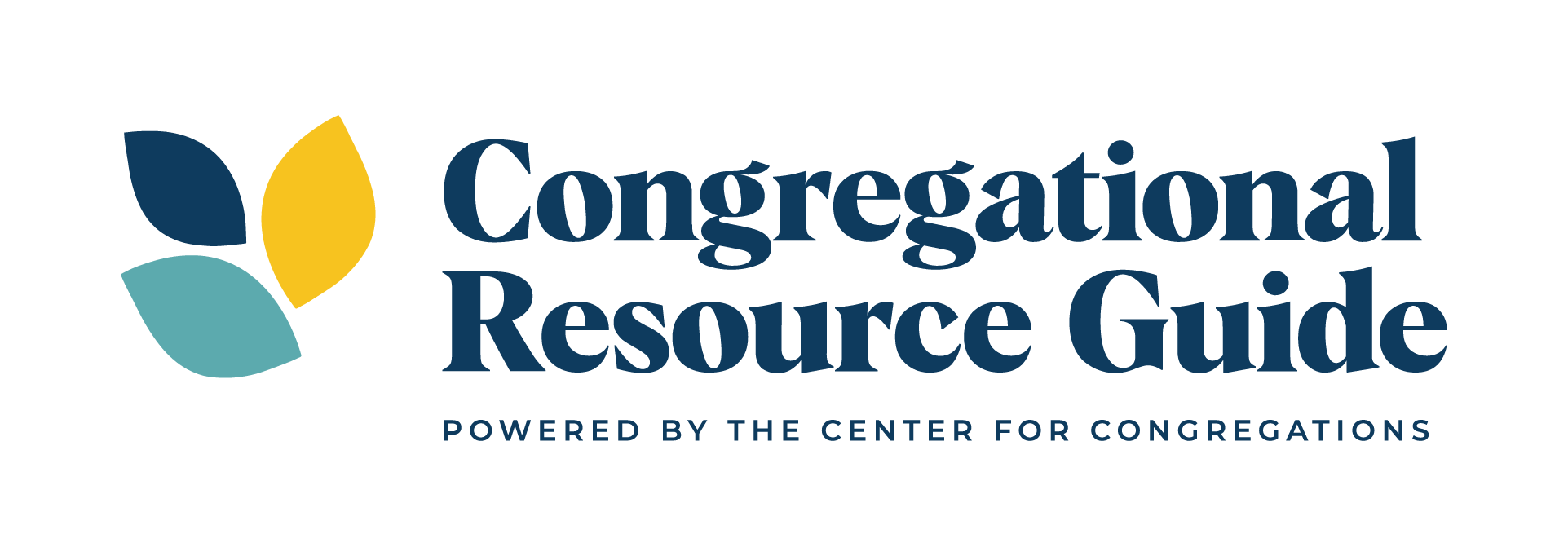Featured Building Issues
This article provides resources and strategies for congregations that are beginning to evaluate the future of their building and property. Author Elizabeth Lynn of the Lake Institute on Faith and Giving encourages congregations to start slow and gather inspiration from other congregations. To begin this process, the article offers three actions congregations can take to get started and a robust guide to organizations that support congregations through this process.
More Building Issues (136)
Featured Collections
Curated by a CRG consultants, collections provide a better way to discover and collect the right resources by topic.
Start ExploringChurch Building Plans
In order for religious leaders to communicate with their audiences, a congregation will commonly gather in a place of worship to do so. This is why the congregation’s facility is so important. Finding the best resources for church building plans can be helpful. Anyone who has experience in religion understands that places of worship can come in many shapes and forms. In essence, practicing religion can matter more than the location in which people do so. At the same time, though, people also expect to have a safe place to go when they want to practice their faith and congregate with others. Religious leaders can often be seen as responsible for providing them with this space, and so it can be good to think about how they can adequately construct a church or place of worship.
When it comes to church building plans, it might be a good idea to first look at pictures of some other beautiful churches and congregational buildings out there. Looking at pictures of beautiful churches and religious buildings can serve as a source of inspiration, providing religious leaders with ideas for what they might want their own building to look like. Of course, every church or congregation is going to be a bit different, and therefore, religious leaders might want to also think about ways in which they can help make their own individual church, synagogue, temple or congregation their own.
Construction and religion, of course, are very different industries. And while religious leaders would likely wish to play a major role in the construction of their congregations, they can also rely on construction professionals for assistance. It is not unusual for religious leaders to have big dreams regarding what they would like their congregation to look like, only to later realize that it might not be architecturally feasible. And so, it might be good to take a look at a few church design building ideas beforehand. That way, religious leaders will have an idea of what they can expect as the construction process unfolds.
Church Building Design Ideas
There are lots of religious leaders who are looking for ways to get inspired, when it comes to congregational building design ideas. And naturally, most people will generally have a few stereotypical ideas regarding what they expect a religious building to look like. On the other hand, everyone also likely wants to make sure that their congregational building is something unique. That way, they will be able to have something different to offer members of their congregation. There are a few ways that religious leaders can get excited, when looking at church building design ideas.
First, it can be helpful to take a look back at what their congregations might have looked like when they were children. They can think about what they liked about those spaces, and what they didn't like. Was the building big enough? Was there enough space? What was the sound like? What was the decoration like? How big were the windows? These are a few of the key topics that religious leaders can think about, when they are going to build a church, congregation, synagogue, or temple.
There are several resources and tools that are available to help religious leaders who are trying to design a congregational building. Often, it can be a great idea to partner with construction professionals who can provide religious leaders with access to these resources, allowing them to provide their own input when it comes to the construction of a congregation building. Church building design software is one of the main tools available to religious leaders. Specifically, this type of software can help religious leaders with visual renderings. With church design software, they can play around with different customizable options, seeing what their building might look like before the construction process actually begins.
In the end, it can also be good for religious leaders to work with construction professionals as members of the same team. Being able to communicate effectively can go a long way in helping make sure that both parties are on the same page, ensuring that the ultimate design is architecturally sound, while also meeting the purposes of a religious building.
Church Floor Plans
One of the main aspects to address during the construction of a religious building involves the use of church floor plans. One of the first things you can do is understand that there is a difference between church floor plans and building plans. Building plans refer to the actual construction of the exterior of the structure, and they are required to be accurate in order to ensure that the building will remain upright once it is finished. Floor plans, on the other hand, address the locations of things such as windows, doors, and the functions of individual rooms. For instance, floor plans might lay out the main hall where the account information gatherers will be, and show various backgrounds of a chart, the locations of bathrooms, and potential escape routes in the event of a fire. While floor plans and building plans can both be effective, they serve two different purposes.
Although most people tend to think about congregational buildings as places they go to on Sundays, congregations have more than one purpose. For example, many congregations will also teach classes during the course of the week. There might also be gatherings for social purposes, from time to time. Therefore, it can be a good idea to look at multi-purpose church building plans. For religious leaders who are wondering how they are going to be able to get their floor plan exactly right, it may be helpful to take a look at church plans online. There are plenty of options available, allowing leaders to tailor their structure to specifically meet their needs and their budgets. Depending on where the building is located, the size of the congregation, and the amount of money available to construct the building, church floor plans can be tweaked slightly. That way, it can be possible to end up with a beautiful building that is stylish, functional, and attractive to each individual member of the congregation.
Simple Church Building Designs
When in doubt, simple is often better. Remember, the key element of your group is the congregation itself, rather than the building. When it comes to simple church building designs, it can be a good idea to look at church building designs photos first. That way, you will be able to see where the various important parts of the building are all located.
When it comes to simple church building plans, it can be a good idea to refer to simple church building plan PDFs. The goal of a simple congregation building is to shoot for straight, minimalist lines, without a lot of ornamentation or decor. There will often be a pedestal located at the front, plenty of seating for members of the congregation, and a back room where the leader can prepare his or her sermon. There might also be one or two meeting rooms, in case the congregation would like to have classes during the course of the week. Finally, you can also make sure that there are windows that allow in natural light. This light can be helpful not only for religious purposes, but also for ensuring that utility bills are kept as low as possible. Congregations are likely going to have overhead costs to pay, as well. There is nothing wrong with having a simple church design. The key thing is to focus on what exists inside of the building, rather than the building itself.
Small Church Building Designs
There are plenty of groups out there that have relatively a small congregational membership. Smaller congregations can use smaller buildings. Otherwise, attendants are likely going to have trouble hearing the religious leader inside of a large building. When looking at small church building designs, it can also be a good idea to look at small church floor plans.
When it comes to designing a floor plan for a smaller congregation, it might be helpful to try and keep the main hall focused on its purpose. In fact, the front door of the building might open directly to the main hall. One thing you can do is think about how many people are going to be in attendance on a regular basis, consider how many rows of seating they might need, and then use this to help dictate how big the room will be.
While looking at small church building plans, you might also consider how high the ceiling has to be. The taller the ceiling, the louder the leader is going to have to speak. But you can make sure that there is plenty of room at the front for them to deliver their sermons. Finally, you can also consider whether the congregation might also need extra meeting rooms. It will likely be okay for a smaller congregation to have one or two extra rooms available for holding classes.
Modern Church Building Plans
Finally, there are many people out there who are also looking at modern church building plans. When looking at modern church building plans in a PDF, it can be a good idea to consider the pros and cons of modern church floor plans. When people think about modern church designs and floor plans, they will often envision vaulted ceilings, a spot for musicians, and fancy ornamentation all the way around. It can be possible that the largest benefit of this type of floor plan is that it provides plenty of room for the congregation to grow. It can also allow the building to be more visible within the community, enabling the structure to cater to a wider audience.
On the other hand, possibly the biggest potential drawback to this is that a modern church design can often exude a feeling of opulence. When people think about worship, they often think about charity and humility - and so, it can also be good for religious leaders to consider the optics of having an opulent, modern congregational building. For help in striking this balance, it can be helpful to reach out to construction professionals, congregational consultants, and other religious leaders who can help guide the way. Don’t be afraid to survey those in your congregation, as well!



